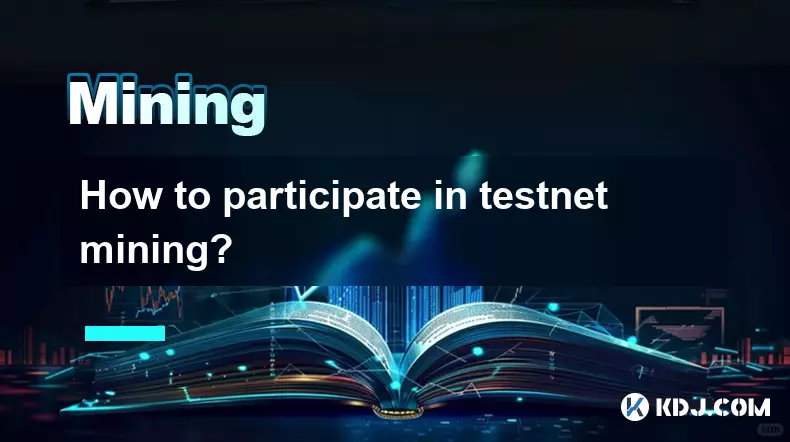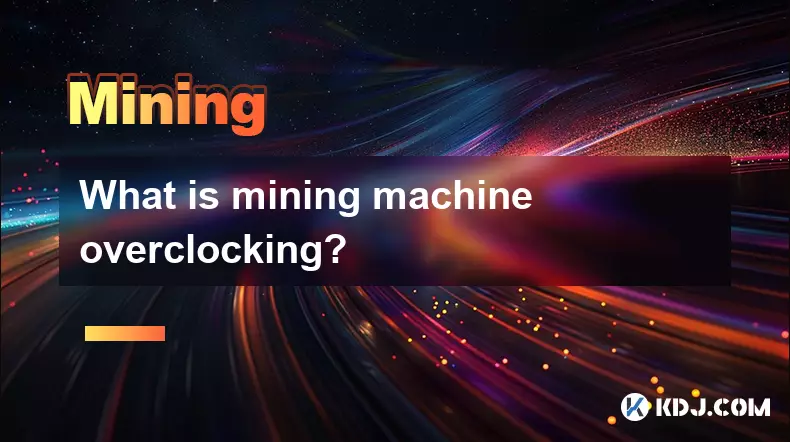-
 bitcoin
bitcoin $109523.663807 USD
-0.13% -
 ethereum
ethereum $4019.526508 USD
2.06% -
 tether
tether $1.000482 USD
0.00% -
 xrp
xrp $2.776815 USD
0.18% -
 bnb
bnb $958.942396 USD
0.12% -
 solana
solana $204.294698 USD
3.84% -
 usd-coin
usd-coin $0.999693 USD
0.00% -
 dogecoin
dogecoin $0.232115 USD
2.09% -
 tron
tron $0.338028 USD
0.84% -
 cardano
cardano $0.790920 USD
1.50% -
 hyperliquid
hyperliquid $44.871443 USD
5.60% -
 ethena-usde
ethena-usde $1.000322 USD
0.04% -
 chainlink
chainlink $21.034165 USD
2.60% -
 avalanche
avalanche $28.794831 USD
-0.54% -
 stellar
stellar $0.360466 USD
1.24%
What are orphan blocks?
Orphan blocks are valid but excluded from the main chain due to network delays, highlighting the decentralized nature of blockchain consensus.
Sep 27, 2025 at 05:55 pm

Understanding Orphan Blocks in Blockchain Networks
1. Orphan blocks are valid blocks that have been successfully mined but are not included in the main blockchain. These blocks meet all consensus rules and contain verified transactions, yet they become detached due to timing and propagation delays across the network.
2. When two miners solve a block at nearly the same time, both broadcast their solutions. Nodes may initially accept one version, but eventually, the chain with the longest proof-of-work prevails. The block on the shorter branch becomes orphaned, even though it was temporarily accepted.
3. Unlike stale blocks, which refer more broadly to outdated blocks, orphan blocks specifically denote those rejected despite being valid. This distinction is critical for understanding how consensus mechanisms handle competing chains.
4. The existence of orphan blocks is a natural consequence of decentralized networks where information travels at finite speeds. No central authority coordinates mining activity, so simultaneous discoveries are inevitable.
5. Miners who produce orphan blocks do not receive rewards because only blocks within the longest valid chain are compensated. This economic disincentive encourages miners to propagate their blocks quickly and remain well-connected to the network.
The Impact of Orphan Blocks on Network Security
1. A high orphan block rate can signal poor network connectivity or centralized mining pools dominating hash power. If a single entity controls significant resources, they might increase the likelihood of temporary forks.
2. Frequent orphans can reduce confidence in transaction finality. Users may hesitate to accept payments until several confirmations have passed, slowing down commerce and increasing waiting times.
3. Some attacks exploit orphaning behavior. For instance, a selfish mining strategy involves withholding a discovered block and secretly building on it, aiming to outpace the public chain and invalidate others’ work.
4. Networks with faster block times, like Ethereum compared to Bitcoin, experience higher orphan rates due to reduced intervals between block creation. This trade-off between speed and stability must be carefully managed.
5. Orphan blocks reveal the dynamic nature of consensus, where legitimacy is determined not by individual validity but by collective agreement over time.
How Different Blockchains Handle Orphan Blocks
1. Bitcoin employs the longest chain rule, discarding any block not part of the chain with the most accumulated proof-of-work. This ensures a clear path forward despite occasional divergence.
2. Ethereum introduced GHOST (Greedy Heaviest Observed Subtree) protocol elements, allowing inclusion of some uncle blocks—Ethereum’s equivalent of orphans—into the canonical chain as references, offering partial rewards.
3. By rewarding uncles, Ethereum reduces centralization pressure and compensates smaller miners who might otherwise frequently produce orphaned blocks.
4. Newer protocols experiment with alternative consensus models like Proof-of-Stake, where the concept of orphans shifts toward slashable offenses and validator accountability rather than computational competition.
5. Sidechains and Layer-2 solutions often implement checkpointing or federated validation to minimize fork occurrences, reducing the chance of orphan-like conditions through tighter coordination.
Frequently Asked Questions
What causes a block to become orphaned?A block becomes orphaned when another block at the same height is accepted into the main chain first. Even if both blocks are valid, only one can persist under the longest chain rule. Propagation speed and network topology play crucial roles.
Can orphan blocks contain double-spent transactions?No, orphan blocks undergo the same validation process as main chain blocks. Transactions inside them are checked against existing UTXOs or account states. However, once orphaned, those transactions re-enter the mempool and can be included in future blocks.
Do orphan blocks pose a risk to user funds?User funds remain secure because orphaned blocks are fully validated. Coins sent in such blocks are not permanently lost; they return to pending status and can be reconfirmed elsewhere. The primary impact is on miner revenue, not asset safety.
Is there a way to prevent orphan blocks entirely?Eliminating orphan blocks completely is impractical in a decentralized system. Reducing latency, improving peer-to-peer propagation, and adjusting block intervals help lower their frequency, but some level of forking will always occur naturally.
Disclaimer:info@kdj.com
The information provided is not trading advice. kdj.com does not assume any responsibility for any investments made based on the information provided in this article. Cryptocurrencies are highly volatile and it is highly recommended that you invest with caution after thorough research!
If you believe that the content used on this website infringes your copyright, please contact us immediately (info@kdj.com) and we will delete it promptly.
- XRP Tundra: Dual-Token Innovation in the XRP Ecosystem
- 2025-09-27 20:25:12
- MUTM: Is This Crypto the Smartest Buy Now?
- 2025-09-27 20:25:12
- Crypto Millionaires: Unlocking Financial Freedom with the Right Investments
- 2025-09-27 20:30:01
- ETH Price Check: Crypto Analysts Favor These Moves Now
- 2025-09-27 20:30:01
- BlockchainFX, Bitcoin Hyper, and Crypto Presales: Finding the Next Big Thing
- 2025-09-27 20:30:01
- Galaxy CEO, Bitcoin, and the Powell Replacement: A $200K Prediction?
- 2025-09-27 20:30:15
Related knowledge

The difference between staking and mining
Sep 24,2025 at 05:18am
Understanding Staking in the Cryptocurrency Ecosystem1. Staking involves holding funds in a cryptocurrency wallet to support the operations of a block...

How to participate in testnet mining?
Sep 22,2025 at 09:18am
Understanding Testnet Mining in the Crypto Ecosystem1. Testnet mining is a method used by blockchain developers to simulate real-world conditions on a...

How to dispose of abandoned mining machines?
Sep 19,2025 at 08:19pm
Assessing the Condition of Abandoned Mining Rigs1. Begin by inspecting each mining machine for visible damage, corrosion, or missing components. Machi...

How to identify high-quality mining pools?
Sep 21,2025 at 03:19pm
Reputation and Track Record1. A mining pool’s reputation is built over time through consistent performance and transparency. Pools that have operated ...

Advantages of decentralized mining pools
Sep 20,2025 at 04:36pm
Enhanced Security and Resistance to Censorship1. Decentralized mining pools operate on blockchain-based smart contracts, eliminating the need for a ce...

What is mining machine overclocking?
Sep 21,2025 at 07:19pm
Understanding Mining Machine Overclocking1. Mining machine overclocking refers to the process of increasing the operating frequency of a cryptocurrenc...

The difference between staking and mining
Sep 24,2025 at 05:18am
Understanding Staking in the Cryptocurrency Ecosystem1. Staking involves holding funds in a cryptocurrency wallet to support the operations of a block...

How to participate in testnet mining?
Sep 22,2025 at 09:18am
Understanding Testnet Mining in the Crypto Ecosystem1. Testnet mining is a method used by blockchain developers to simulate real-world conditions on a...

How to dispose of abandoned mining machines?
Sep 19,2025 at 08:19pm
Assessing the Condition of Abandoned Mining Rigs1. Begin by inspecting each mining machine for visible damage, corrosion, or missing components. Machi...

How to identify high-quality mining pools?
Sep 21,2025 at 03:19pm
Reputation and Track Record1. A mining pool’s reputation is built over time through consistent performance and transparency. Pools that have operated ...

Advantages of decentralized mining pools
Sep 20,2025 at 04:36pm
Enhanced Security and Resistance to Censorship1. Decentralized mining pools operate on blockchain-based smart contracts, eliminating the need for a ce...

What is mining machine overclocking?
Sep 21,2025 at 07:19pm
Understanding Mining Machine Overclocking1. Mining machine overclocking refers to the process of increasing the operating frequency of a cryptocurrenc...
See all articles









































































